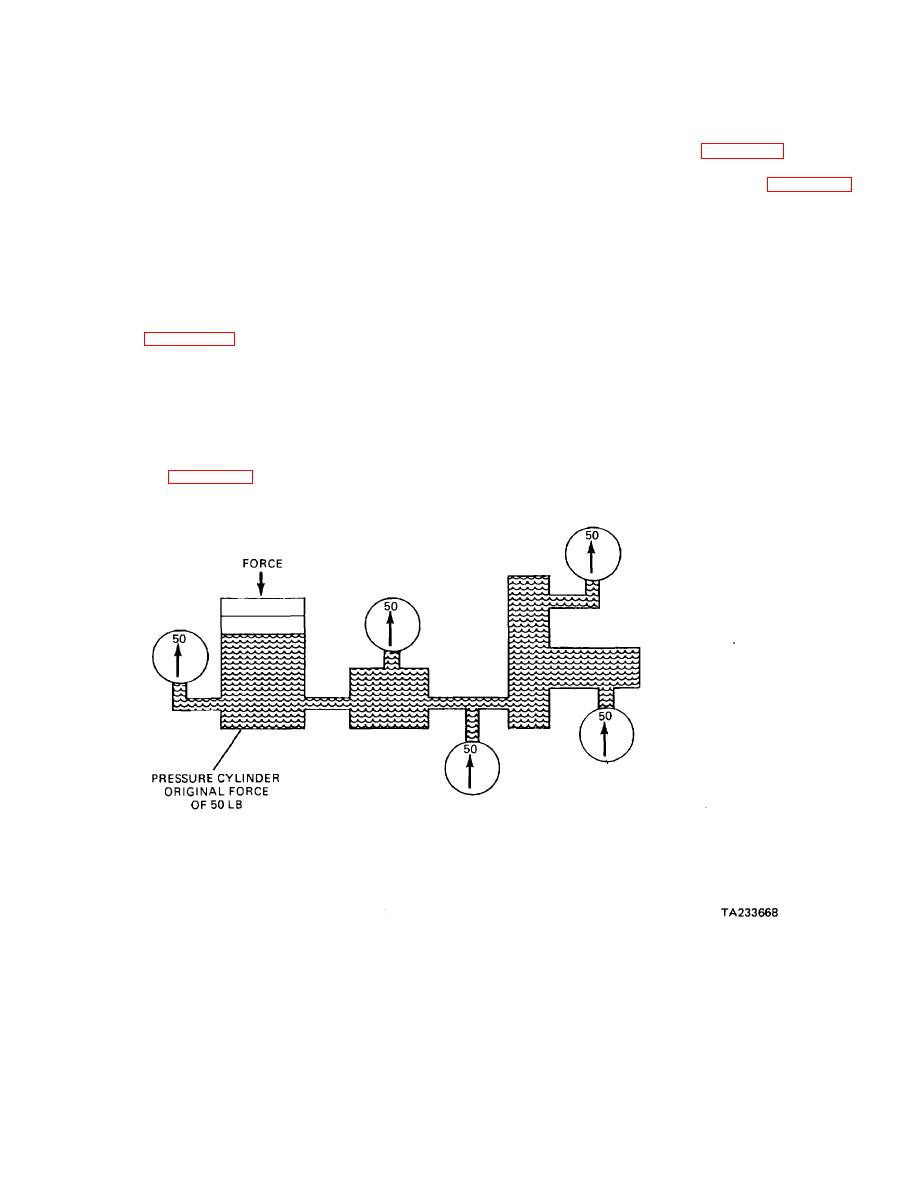
| Tweet |

Custom Search
|
|

|
||
 TM 9-8000
readily. Gases, on the other hand, react differently when
illustrates how a lever and hydraulic system can be used
compressed. As a gas is compressed, the space
to perform the same task. In this figure, both systems
between molecules is decreased, therefore allowing the
increase mechanical advantage, therefore making it
volume to be decreased. As a result, the molecules are
easier to move the object. In A, figure 20-3, a long solid
forced to travel shorter distances and interact more
rod, with the fulcrum placed close to the object, is used to
violently. This increased molecular interaction results in
develop the mechanical advantage. In B, figure 20-3, a
the generation of heat while compressing a gas.
large-diameter piston is used to develop the force to
move the object. In each system, certain factors must be
forfeited to obtain this mechanical advantage. Each is
20-2. Pascal's Law. Pascal's law states that in an
listed below.
enclosed system, fluid pressure developed by an external
source acts evenly and in all directions without changing
a. In the lever system, the rod must be pushed through
magnitude in the system. This principle is the basis for
a great arc to obtain a small movement with an increased
many systems in automotive vehicles. For example,
force on the opposite end of the rod.
brake, lubrication, and fuel systems are all dependent on
Pascal's law. Figure 20-2 illustrates Pascal's law; note
b. The hydraulic system requires the use of a large
that the initial force of 50 psi (344.8 kPa) is distributed
amount of fluid under the piston to raise the object
evenly throughout the system.
slightly. This is illustrated in detail in paragraph 20-8.
20-3. Mechanical Advantage in Hydraulic Systems.
These are two of the most important factors that must be
Hydraulic systems possess a definite amount of
considered when developing mechanical advantage.
mechanical advantage. Comparisons can be made
between a simple lever arrangement and a basic
hydraulic system. Figure 20-3
Figure 20-2. Pascal's Law.
20-2
|
||
 |
||